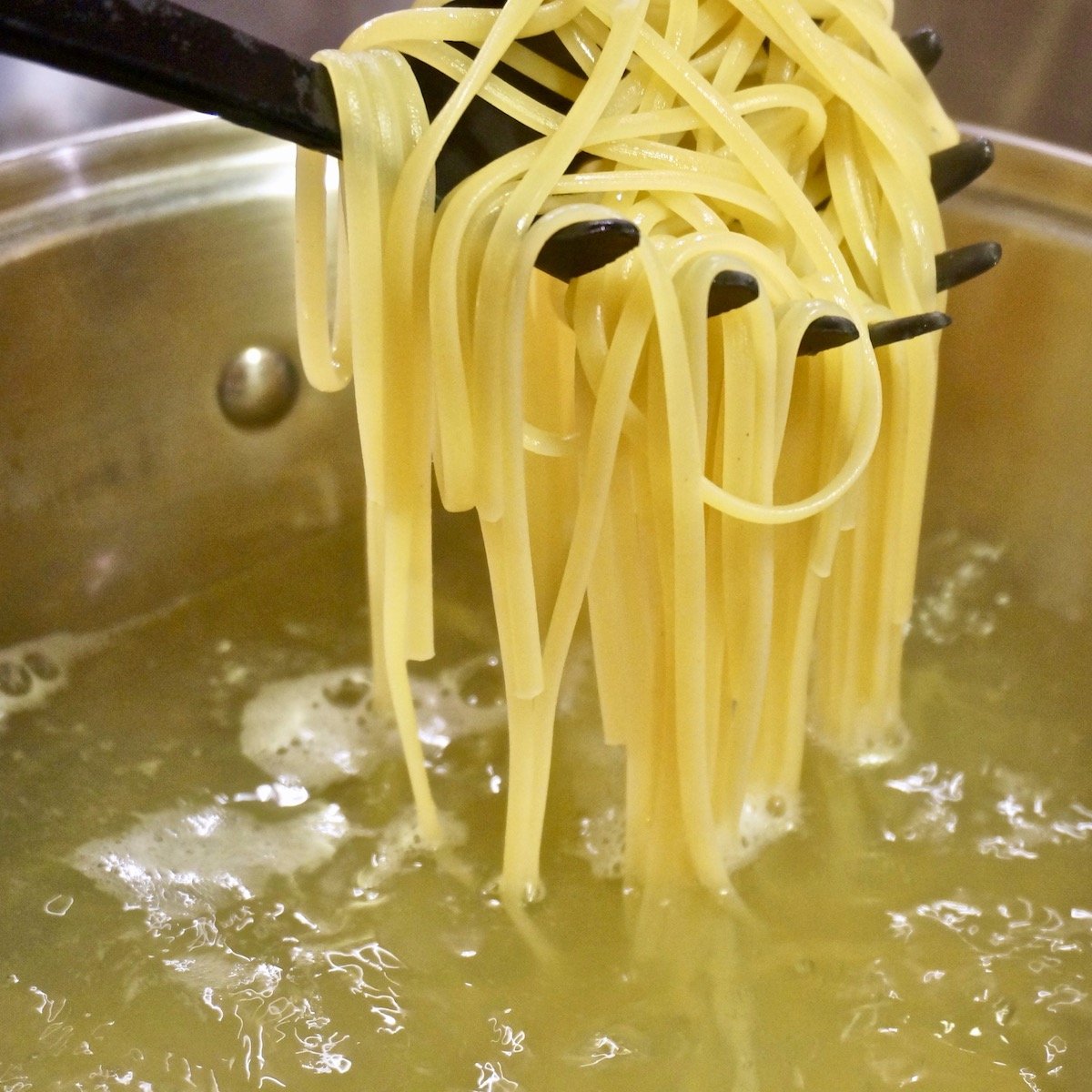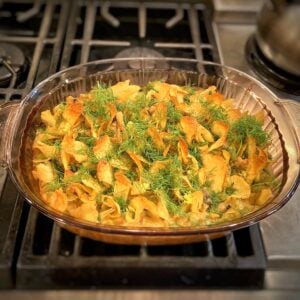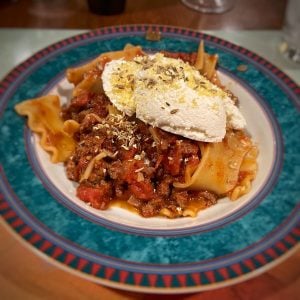How to Keep the Top Layer of Lasagna from Getting Crispy
Fixing an overcooked, crispy top layer of lasagna might seem like a challenge, but it’s easier than you think.
Whether the top layer browned too much in the oven or turned dry and crunchy, you don’t have to sacrifice the entire dish. You can restore moisture, balance flavors, and even improve the presentation with a few quick tricks.
The key is understanding what went wrong. Overcooking often occurs when lasagna bakes uncovered for too long or at too high a temperature. You can salvage the dish beautifully by addressing the dryness with added moisture and covering it during the final stretch of baking. Sometimes, adding fresh ingredients like extra sauce or cheese can work wonders, giving the lasagna a second chance to shine.
Instead of starting over, take control of the situation with simple techniques. A little creativity and the right tools—like foil, fresh toppings, or even a splash of stock—can completely transform the dish. It’s a great opportunity to turn a potential kitchen disaster into a triumph. Once you master these steps, you’ll feel more confident rescuing any lasagna mishap and ensuring every layer is as delicious as you intended.
A Help Letter
I got sent me the following email:
“Please Help! I’ve tried everything with the final top layer of pasta for my lasagna. It always cooks too crispy and hard. I’ve even tried a double layer and peeled the top off to still find the second layer also crunchy and too difficult to chew around the edges. Finally, I’ve covered it completely with sauce to have it drip all over the oven because of the bubbling.”
“HOW CAN I GET PERFECT TOP LAYER OF PASTA???” – Gail W.
Lasagna Cooking Tips
Try these strategies to keep the top layer of your lasagna from getting too crispy:
- Cover the pan with aluminum foil. Cover the lasagna pan with foil before baking to protect the top layer from overcooking. Keep the foil on for at least the first half of the baking time. Remove it during the last 15–20 minutes to let the top brown just right.
- Lower the oven temperature. Baking at a lower temperature prevents the top from crisping too quickly. This allows the lasagna to cook evenly and gives the cheese time to melt without burning.
- Add a layer of moisture. Spread tomato or cheese sauce over the noodles before adding the final layer of cheese. This step locks in moisture and keeps the top layer from drying out.
- Use a water bath. Place the lasagna pan in a larger baking dish filled with water about halfway up the sides. The steam created during baking keeps the top moist and tender.
Chef Ricco offers an extra tip: “Before covering the pan with foil, add a layer of plastic wrap. The plastic won’t melt under the foil and helps trap even more moisture.”
Follow these steps to enjoy a perfectly cooked, delicious lasagna every time.
My Basic Lasagna Recipe
Here is my basic lasagna recipe with some simple step-by-step instructions. And if you want to try something a little more involved but just as easy, check out Spinach & Roasted Pepper Lasagna.
















22 Responses
No offense to Gail, but the crispy top layer is my favorite part!
I must agree, I love the crispy part
me too@!
Interesting method using plastic (cling) wrap. Would never have believed it doesn’t melt during cooking. And I won’t until I try it for myself!
I thought the same thing until I tried it at home.
Well….I should have followed my instincts…..guess what…the plastic wrap melted 🙁 Please do not do this at home you will ruin all your hard work.
Do you think cooked or non cook lasagna noodles make for a better over all lasagna. And which would be better for a not hard top layer.
DAMN, that recipe is really cool! Thanx
I thought aluminiun foils were not allowed in microwave,, Can we really use aluminiun foils in microwaves.pls reply…. my top layer got hard
Prasad, this tip is for a lasagna in the oven, not the microwave. You are correct. You do not use aluminum foil in the nuker.
No you can’t use aluminum foil in Microwave will spark or cause a fire use it in oven
Hi Reluctant Gourmet (is this the correct way to address you)?
I too am having problems with crunchy brown lasagne top layer and macaroni cheese top layer. The meal looks ok when removed from the oven. I remove a portion for my husband to take to work. By the time he gets it there the top is crunchy and brown and totally inedible. He only has a microwave at work. How can I re-heat the pasta dish in the conventional oven and the microwave its is crusty already??? In otherwords how do I kill the crusty so it stays dead and remaians nice and en dente??? Your response would be so much appreciated. Marion
Hi Marian, I’m assuming you are using Chef Rico’s tip for covering it with plastic wrap and then aluminum foil when making it in the first place. I wonder if he tried covering the dish with plastic wrap before microwaving would solve the problem. Also, have you tried wrapping the piece you remove for you husband to take to work in plastic wrap to keep the air from getting to it and making it crust up? I would give that a try too.
Any other suggestions from someone who has solved this problem is welcome.
I honestly signed up for this because I couldn’t not say something. If a “Chef” is telling you to microwave anything, you should be questioning the validity of their expertise.
Also, tinfoil over your pan and back into the oven for a bit will work. If its dry add a tiny ( very tiny) bit of water to the pan and then cover, etc. Adding extra tomato sauce to it will destroy the flavor combinations you’ve already tediously baked together.
Hi Kevin, I’m not sure why you think anyone is suggesting to cook this in a microwave and if you look closely, it says to cover the plastic wrap with tinfoil as you are suggesting.
Oh my gosh. It is all so clear now. The recipe I followed said to cover with shrink wrap, then foil, and store in the refrigerator overnight. I only kept mine in the refrigerator for an hour or so, but I took everything off to bake it. The top layer of noodles with sauce and cheese on top totally curled up and stayed hard (like eating raw noodles right out of the box). Yuck. I just pulled off the top layer and put on a new layer of cheese, but I will heat it up with the shrink wrap and the foil (although it scares me and stresses me out). I also used the oven-ready noodles (no boil), and with mine, the recipe says to use more water or milk with them and to cook them covered with foil. I didn’t do either of those things because I wasn’t following their recipe. It also cooked in half the time. Thanks for the advice. Live and learn.
You are very welcome.
Plastic wrap absolutely melted 🙁
Still crispy top layer too.
Julea, did you cover the plastic wrap with aluminum foil too?
The plastic did melt . Had to throw it away!!!
Have tried it several times! Works like a charm! Thanks for the tip!
I think if you are using plastic wrap that you have to cook it on low heat.